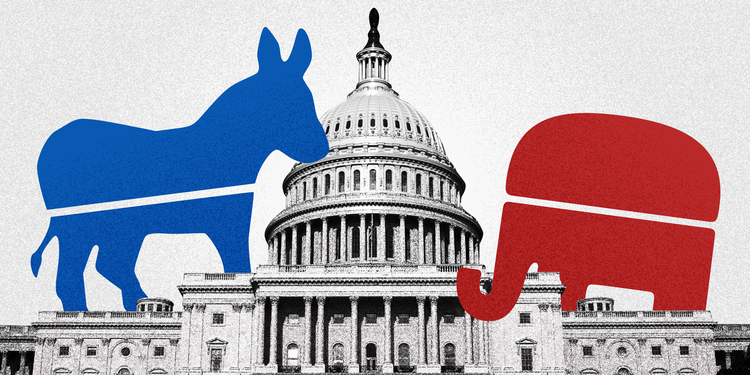The 2018 Midterm Elections
November 16, 2018
November 6, 2018 marked the first midterm elections for the United States under President Donald Trump. The two most powerful political parties – the Democrats and the Republicans – prepared their candidates and their platforms for months and it all came down to one day and the American voters.
The general consensus on midterm elections, until this year, was that they are not very important, and as a result they typically have the lowest voter turnout of all elections. When the country is not voting for the next President, some people do not see the value of casting their ballot. However, this year was different. The extreme dissent for the current President – who will remain in office for at least two more years – originally galvanized Democrat voters, although the Republicans quickly responded with their own campaign advertisements. Voter turnout soared, and the results ultimately reflected the efforts of both parties.
Since the 2016 election, the Republicans have been in power in the White House, the Senate, and the House of Representatives. Democrat Representatives and Senators had little opportunity to express the views of their constituents and were eager to take over at least one of the legislative Houses, so they could block the Republican and Donald Trump’s policies. Republicans were also passionate about controlling the Democrat “mob” and hoped to retain power in both Houses to continue easily pushing policies through the adoption process.
Polls rushed out from multiple sources and most had slightly differing predictions; however, the common thread over the majority of the polls showed the Democrats taking control of the House of Representatives and the Republicans retaining control of the Senate. Polls for individual candidates and various states’ propositions also emerged and typically put the Democrats at a slight advantage. Despite extensive polling, the only thing voters and candidates alike can do is wait until the ballots are counted. So, were the polls right?
Yes and no. The Democrats will soon control the House of Representatives and the Republicans will still have control in the Senate. However, the margins of victory in both Houses are yet to be determined, as there are still some House and Senate races being recounted and contested. The most controversial race, which has been receiving extensive national media coverage, is in Florida between Democrat Senator Bill Nelson and current Republican Florida governor Rick Scott. The media was primarily claiming a “blue wave” was going to hit the House, and possibly even the Senate, and it appears they were right to some extent. When all of the ballots are counted and the final results are in, “House Democrats in 2018 will probably gain 35 to 38 seats” according to the Washington Post and the Republicans will likely only gain 1 to 3 seats in the Senate once the Florida election is called. Multiple governor-ships were also flipped to the Democrats. Both Republicans and Democrats have claimed they were victorious in the 2018 elections; however, it is ultimately the voters who will decide in the coming months whether the changes in the government was a victory.
The 2018 elections were ultimately historic with the extensive voter turnout and they presented the Trump administration with an evaluation of their first two years in power by the American people. As this election cycle comes to a close, the country is already looking ahead to 2020 and contemplating exactly where the American political culture is headed.










Lauren Bulanek • Dec 10, 2018 at 1:21 pm
This news article is very informative and free of bias. It is refreshing to read a piece that simply tells the truth and allows the reader to decided how to view the facts. The article is well written and to the point. Chloe seems to be very passionate and it shows in her work.